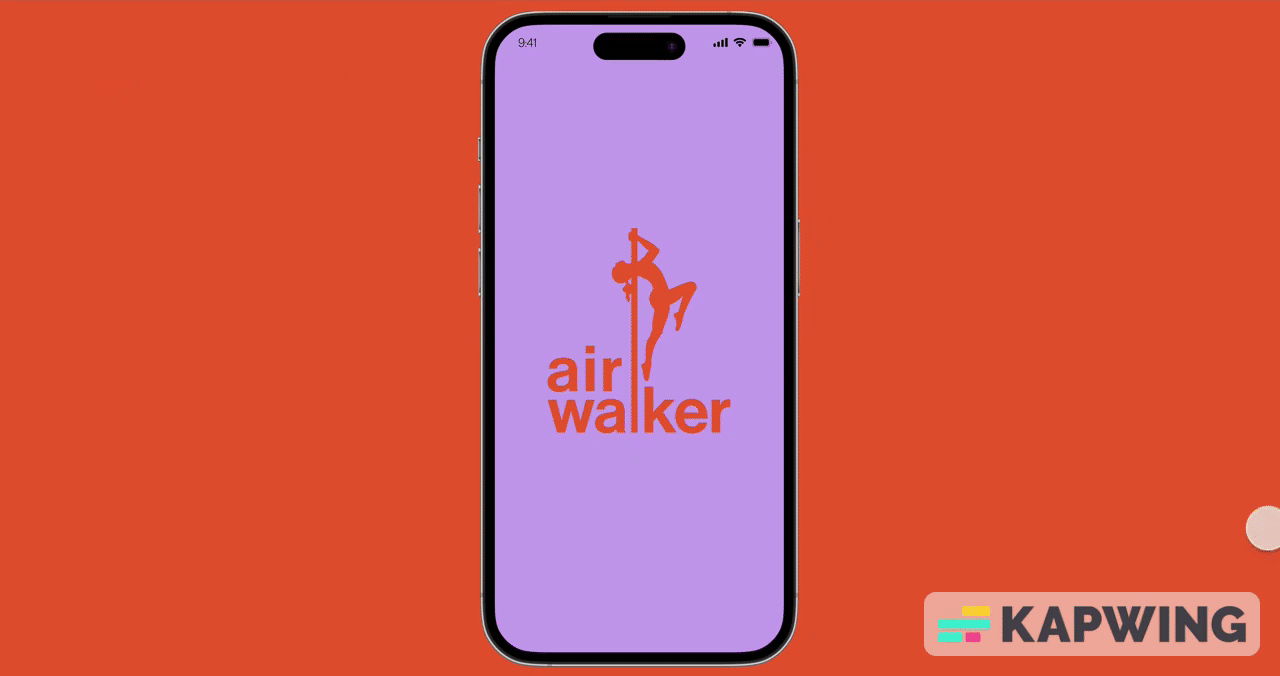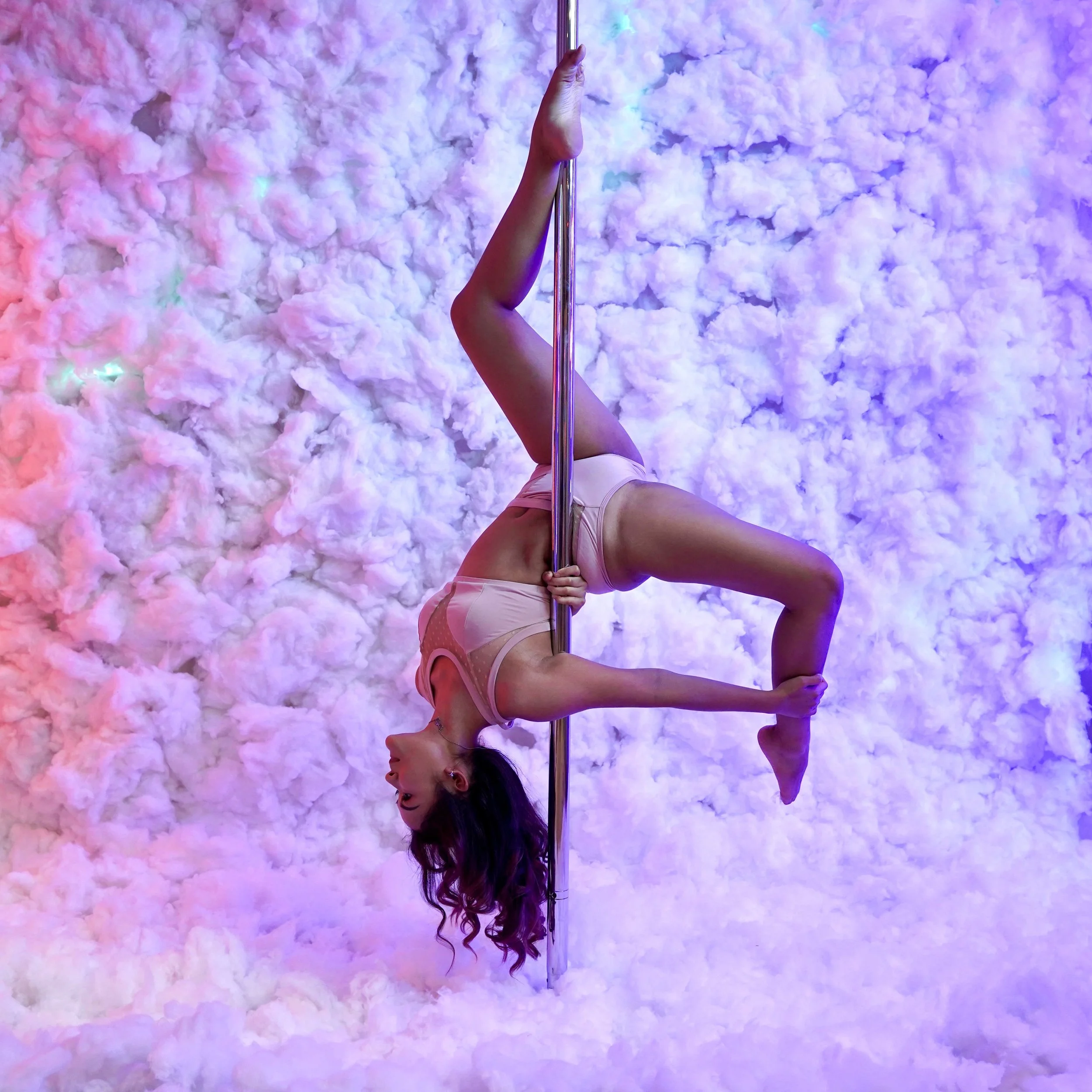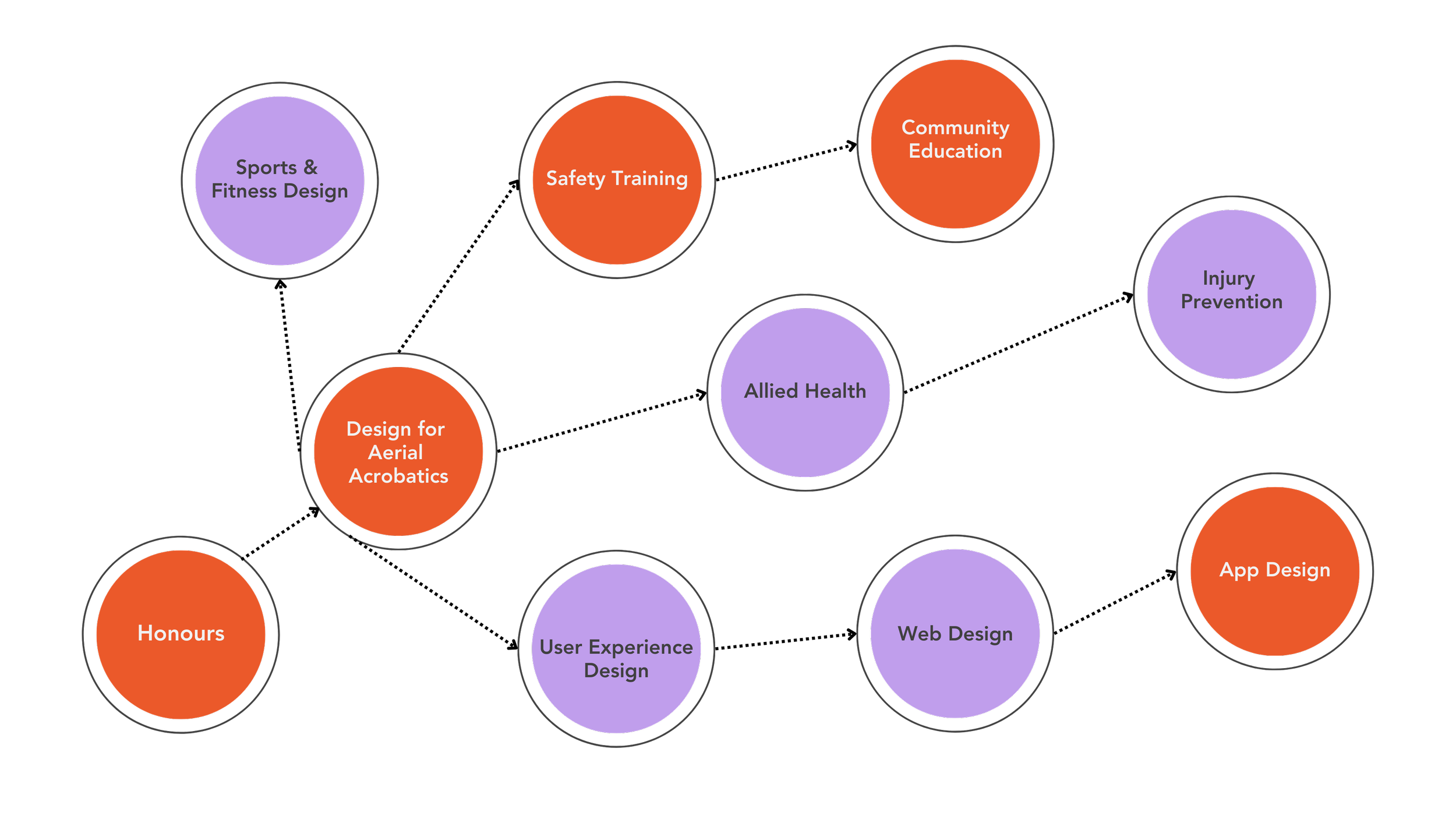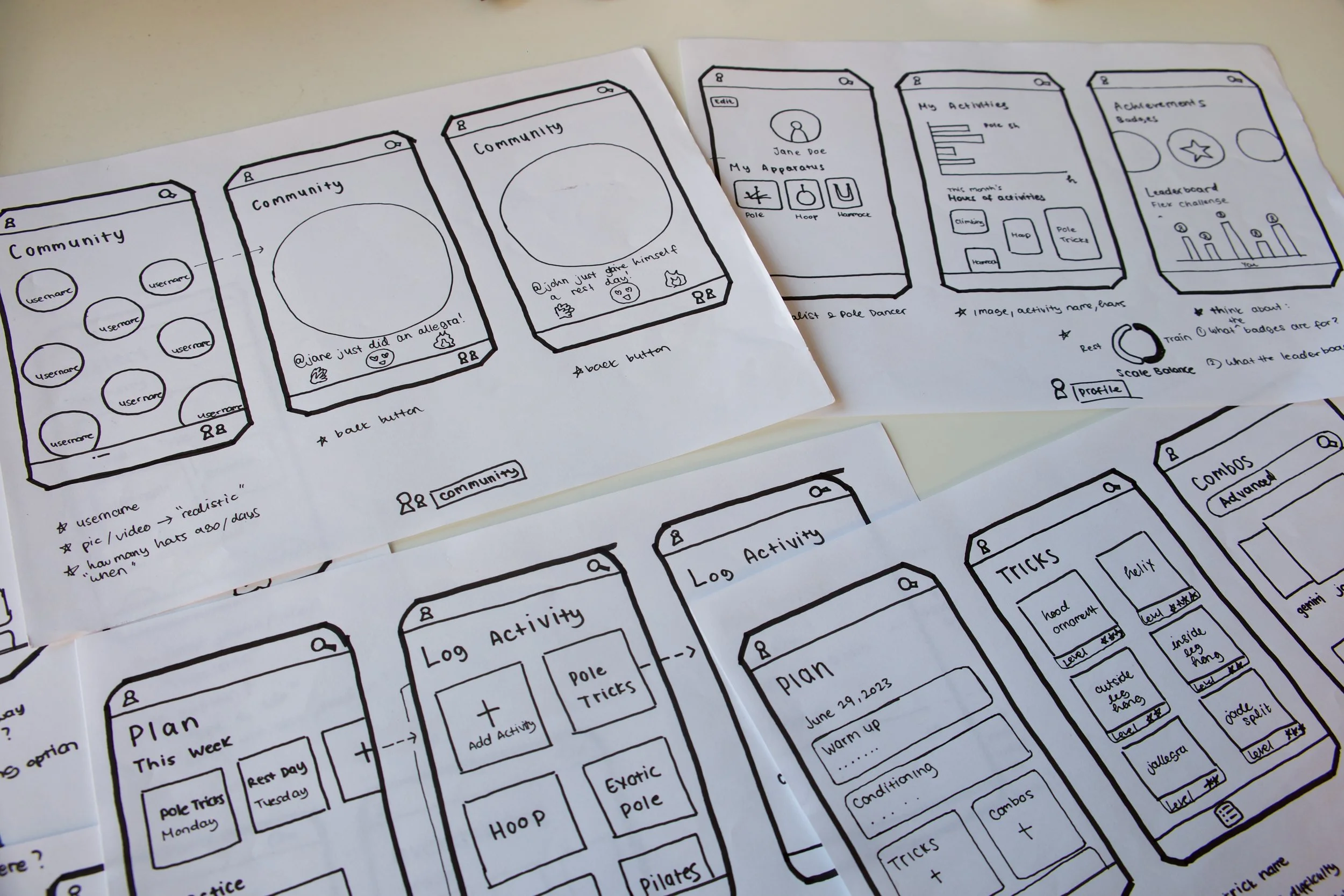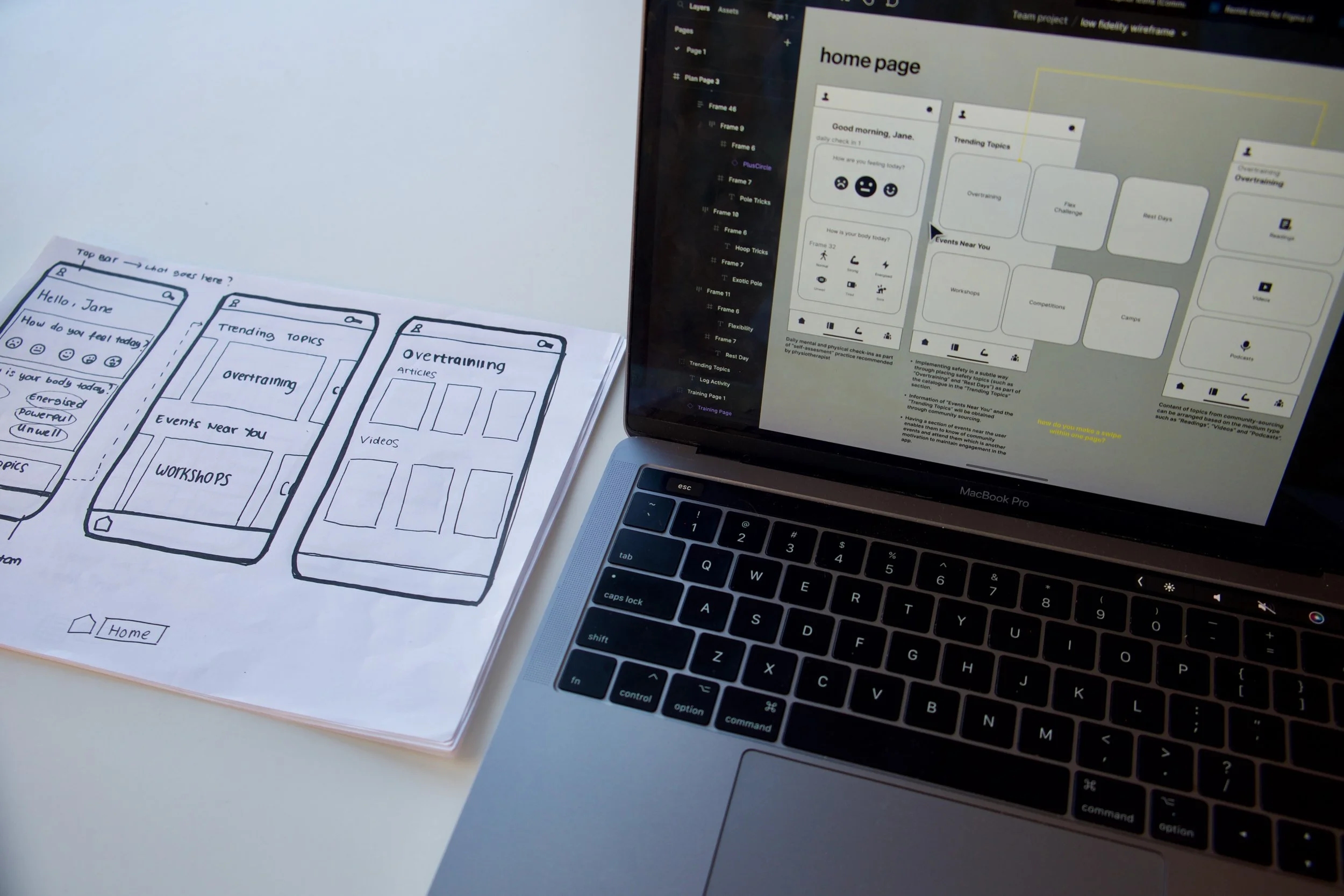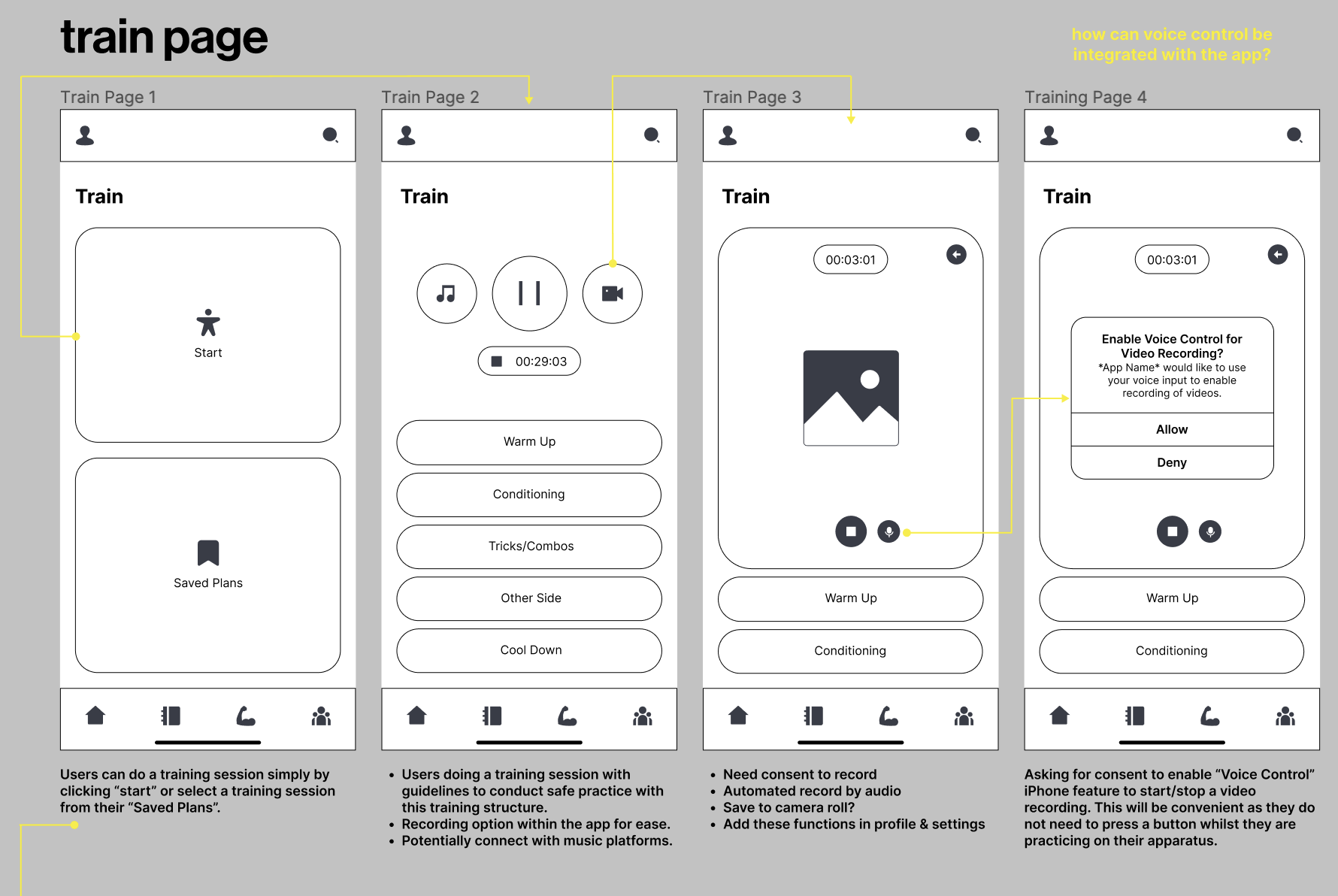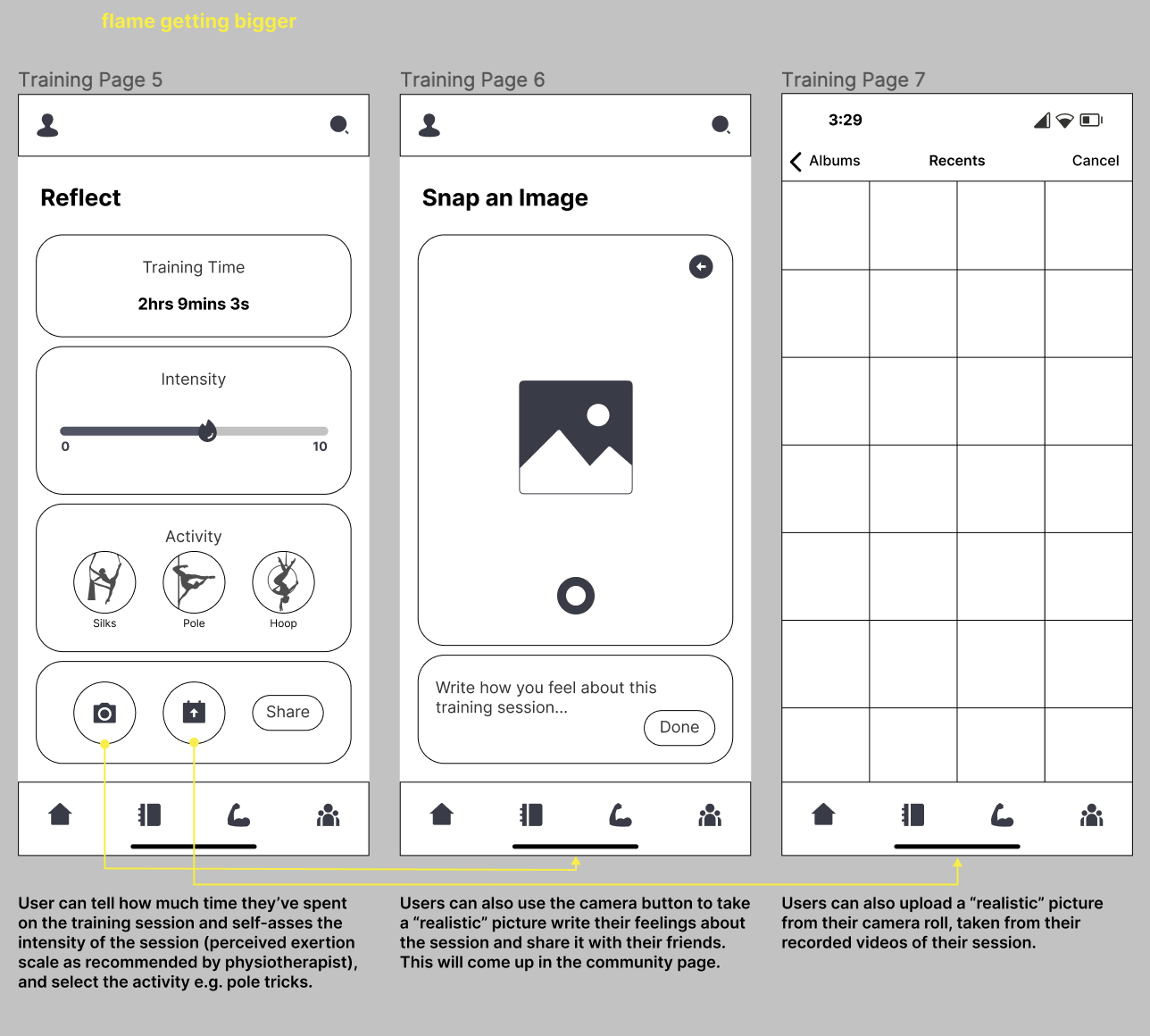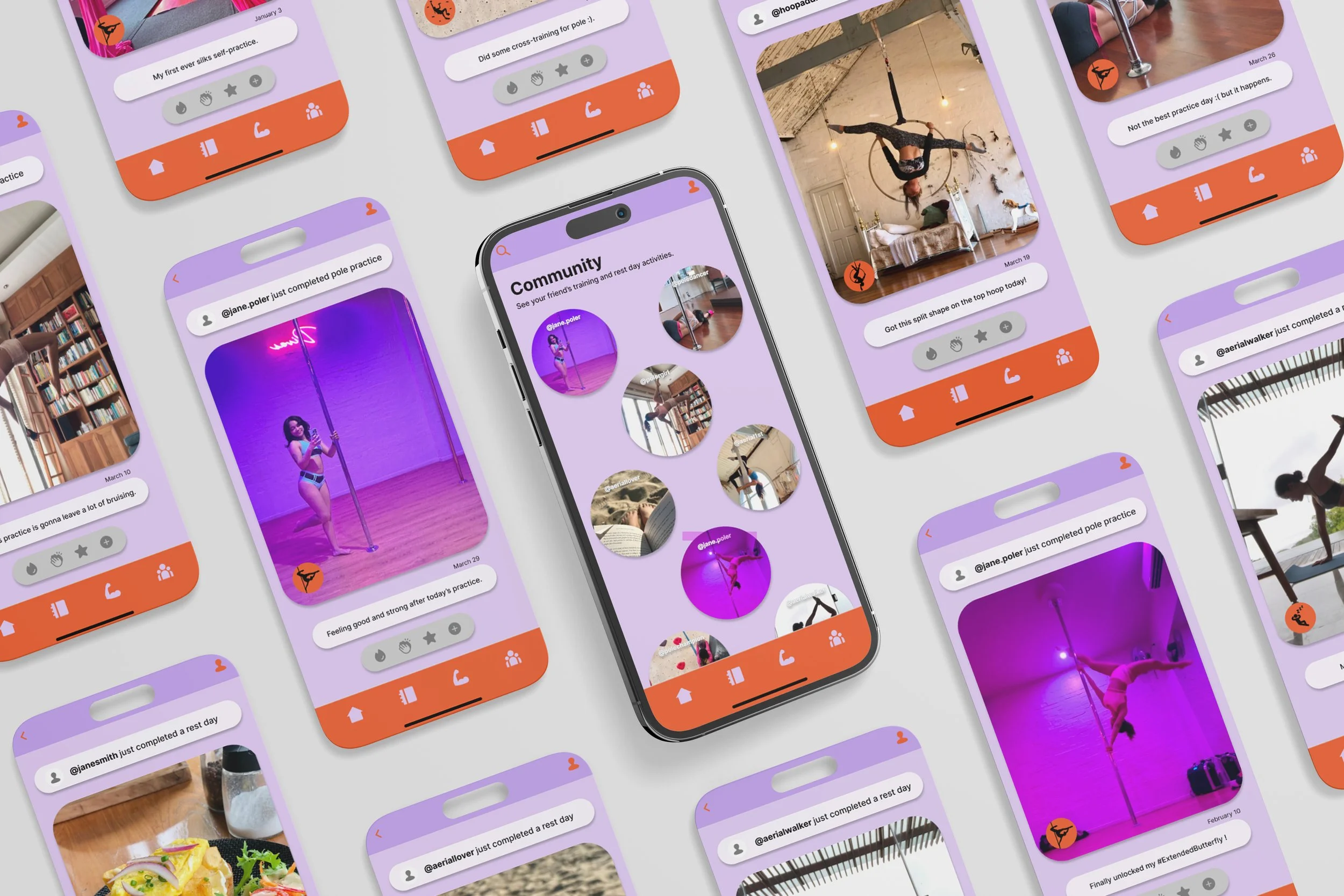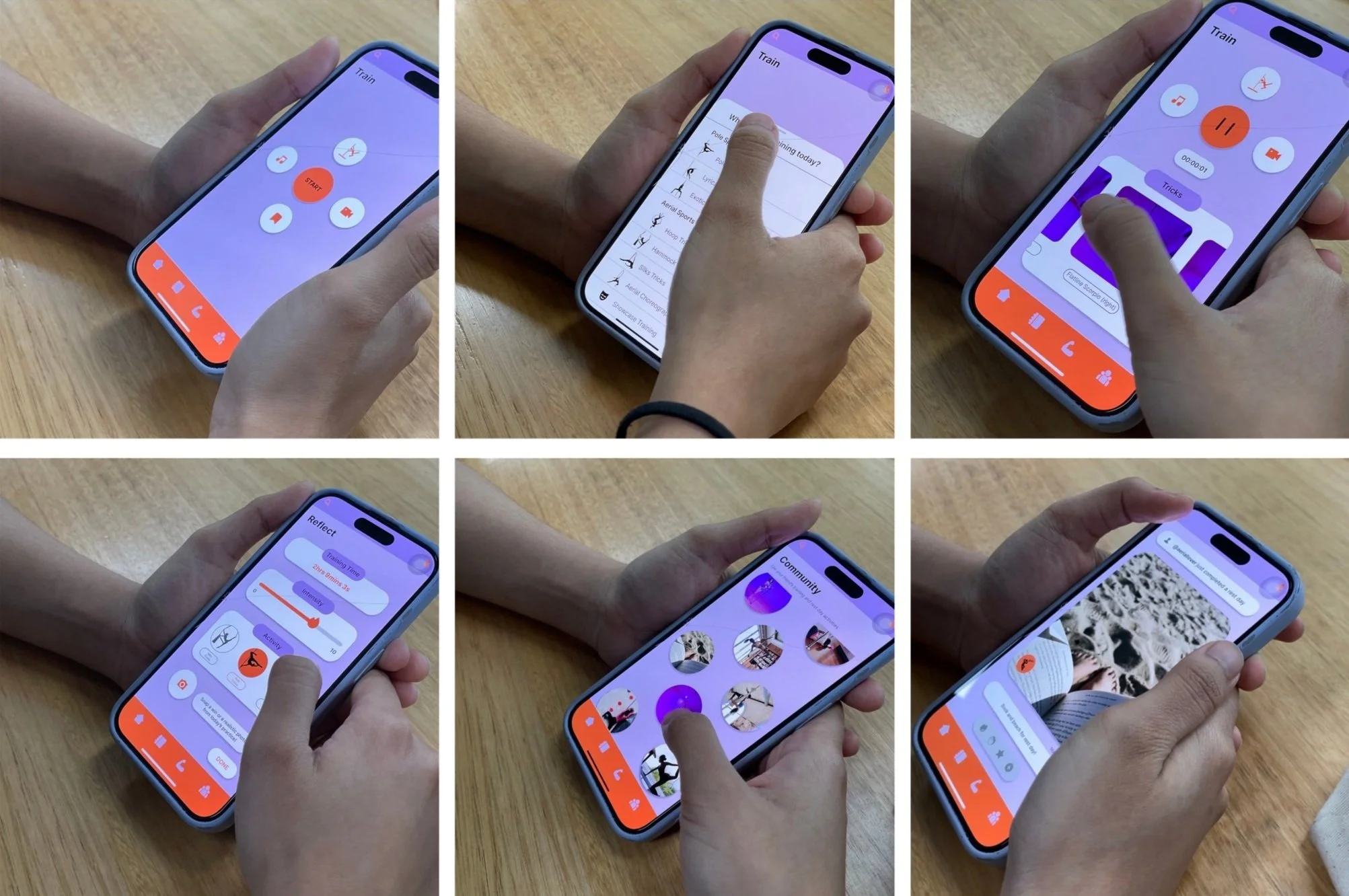airwalker
design for aerial acrobatics
Programs
Figma, Adobe Creative Suite, Miro
Supervisor
Dr. Jordan Lacey
Project Type
UI/UX
Duration
1 Year, 2023
“How might design encourage safe training approaches and strengthen community culture in aerial acrobatics training?”
Share Progress + Rest
Customise Training
Reflect on Training
What is aerial acrobatics?
Aerial acrobatics, or aerial arts, is a sport where athletes execute tricks in the air suspended from an apparatus (Ruggieri & Costa,2019). Pole dancing, commonly correlated with aerial arts, is also a strenuous fitness discipline which requires specific and skilled training (Ruscello et al., 2018). Historically, aerial acrobatics was an eccentric sport performed by circus artists.
The Problem
There has been growing interest in aerial acrobatics and pole fitness recently (Ruggieri & Costa, 2019). Due to its demanding nature, injuries are widespread, with an incidence rate of 8.52 per 1000 activity hours, which is immense in contrast to gymnastics, with 5.2 per 1000 hours (Nicholas et al., 2022), as cited in Muscat, 2022).
This is due to insufficient universal education on risk and injury prevention and unregulated safety standards in the industry (Muscat, 2022). Few precedents exist but don’t focus on the importance of safety training. In pole dance, due to its strip club origin, participants still have to cope with the associated sex work stigma. Moreover, design for aerial acrobatics is still in its infancy, unlike the broader field of sports design.
Vice-Chancellor’s List for Academic Excellence (2024)
Dean’s Awards Special Mention RMIT University (2023)
Design Process
01
Research
Literature Reviews, Interviews, Surveys
02
Analysis
Research Analysis & Affinity Diagram
03
Define
Persona & User Journey Map
04
Develop
Low & Mid-fidelity Wireframes
05
Outcome
Accessibility, Style Guide, Prototyping
06
Validation
Interview, Competitive Analysis, User Testing
01
Research
Literature Reviews
Surveys
Interviews
Literature reviews were done to investigate the main problems in the industry, such as high injury rates, overtraining and shadow banning in social media. Hence, relevant fields of research were identified.
A survey of aerial and pole students was conducted to seek insights into different training styles. 59% said it is challenging to schedule training and only a few are aware of overtraining.
Interviews were done with industry professionals i.e. an aerial instructor, two pole dance instructors and a physiotherapist specialising in pole dance and aerial treatment.
02
Analysis
Research Analysis
Affinity Diagram
Overtraining is a common theme, mentioning the need for safe training methods to build awareness of student’s training loads.
“Pole dance is a small industry with barely any research.”
“Students love to get to the highest level they can, overloading their bodies.”
“Aerial dance is an addictive hobby; but there isn’t enough information on the consequences.”
“People are very ambitious; they don’t see what can fail.”
The insights are then categorised to create top-level categories and colour-coded using an affinity diagram. Relationships between categories are also identified, in which overtraining and unregulated practice are significant problems.
Personality, resource access and availability can be methods to develop body awareness to reduce overtraining. Ideas are generated based on the categories, which will be the platform’s focus.
03
Define
User Journey Map
Persona
The map summarises how students develop overtraining tendencies. A crucial pain point is the realisation of overtraining, most likely only after injuries. Potential solutions revolve around logging training sessions to self-assess training loads.
Two student personas were created based on the interviews and surveys; intermediate aerialist, beginner pole dancer.
04
Develop
Low-Mid fidelity Wireframe
Wireframing was done to illustrate methods for embedding safety through user and community engagement. Firstly, a daily check-in on wellbeing allows users to assess themselves before self-training. Users can plan their self-practice sessions and use the plan in practice.
The community page enables users to share training and rest activities. Within the profile page, safety can be delivered through illustrations of hours spent on training and rest displayed as a scale.
05
Design
Accessibility
Prototyping
Style Guide
The colour palette was run through a colour blindness simulation test created by David Nichols to test the accessibility on three main colour blindness types. A style guide was created to represent “empowerment” and a “strong” feminine image in aerial acrobatics.
A Safer and Engaging Self-Practice Experience
Airwalker lets users plan self-practice sessions: tricks on both sides, warm-ups and other sequences. A training structure reminds them of what they have done and missed to ensure efficiency. The reflect page (recommended by the interviewed physiotherapist) is where users self-assess training intensity, building better body awareness.
Social Change: Fostering Safety Through Community Building
Community members celebrate each step of practice, whether achieving a trick or relaxing to recover. Ordinary and unfruitful training days are celebrated in the same way.
Behavioural Change: Incorporating Rest as Part of Practice
The app encourages to recognise rest as part of practice. Users can plan training and rest days, slowly increasing their load. Both rest and training activities mark the user’s progress, which is community-validated.
Research Outcomes: Enriching Industry Resources
Airwalker encourages the community to learn the history of pole dancing and aerial arts and acknowledge their origins. This collated research from the community results in a progressive field outlook and minimises negative associated stigmas.
06
Validation
Expert Interview
User Testing
Competitive Analysis
Prior to the design outcome, an expert validation interview was done with a graphic and communication designer for feedback on the branding, graphic and communication design. The design was approved with feedback on the information hierarchy of the app prototype, which was then improved.
Competitive analysis reveals that the app is unique compared to its competitors by addressing safety in training with a community-building approach.
User testing was done with a realistic user, a pole dance student who self-practises in addition to taking pole dance classes. The user found the app intuitive and enticing through its visual and interactive design.


